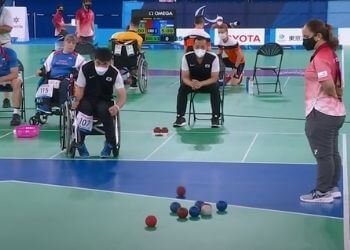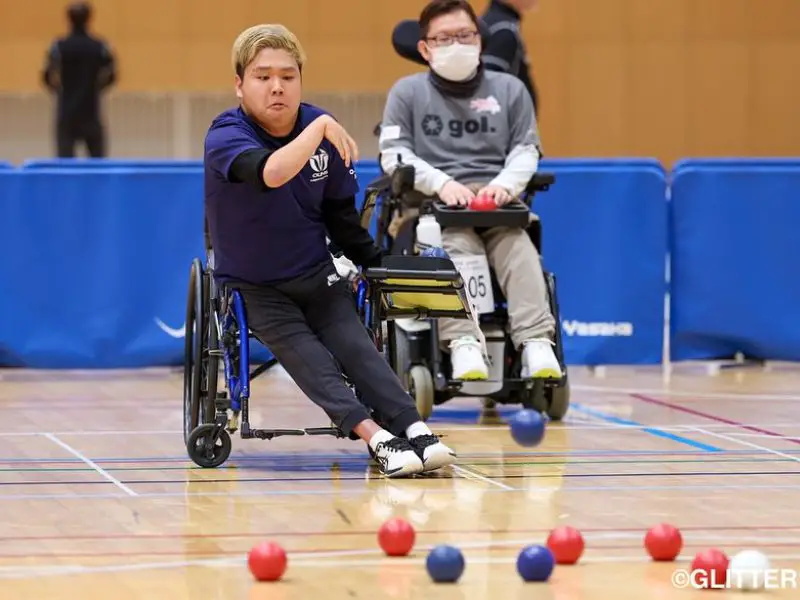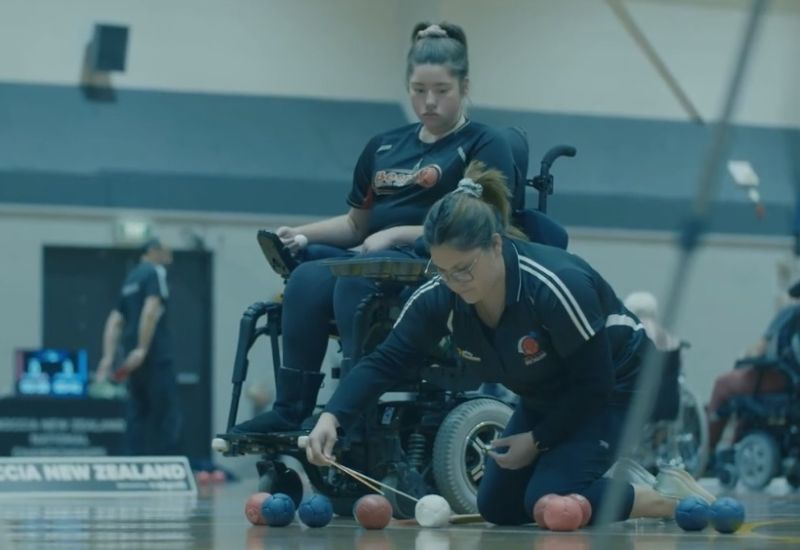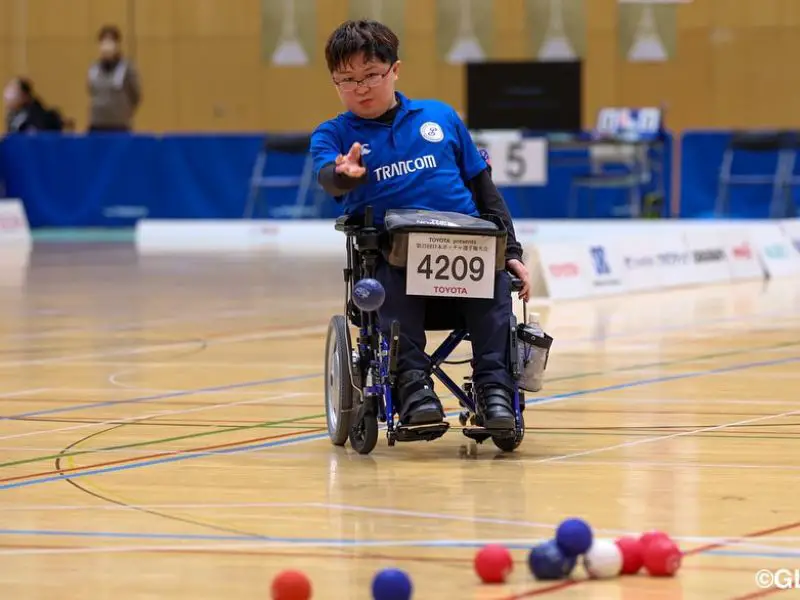A Boccia team can consist of one, two, or three players. Boccia is a sport that is played by individuals with severe disabilities, and the team size depends on the classification of the participants.
The objective of the game is for players to throw or roll their balls as close as possible to a target ball, called the jack. The team with the closest balls to the jack at the end of the round earns points.
Boccia provides a competitive platform for individuals with disabilities to showcase their skills and compete at various levels, including local, national, and international tournaments.
With its inclusive nature, Boccia promotes inclusivity, team spirit, and skill development among players, regardless of their physical abilities.
Understanding Boccia
Boccia is an inclusive sport that is rapidly gaining popularity among individuals with disabilities. The game is played on a flat surface, typically indoors, and shares similarities with bowls and pétanque.
History Of Boccia
The origins of boccia can be traced back to ancient Greece and Rome, where variations of the game were played.
However, it wasn’t until the 1970s that boccia was officially recognized as a sport for individuals with disabilities. Today, it is governed by the Boccia International Sports Federation (BISFed) and is a Paralympic sport.
Rules And Equipment
Boccia is played with a set of colored leather balls, typically red and blue, as well as a white target ball called the jack.
The objective of the game is to get your balls as close as possible to the jack, earning points for each ball that is closer than your opponent’s. The game is played in rounds, with each player or team throwing six balls per round.
To ensure fairness and equal opportunities, boccia has a classification system that categorizes players based on their level of impairment.

This allows players of different abilities to compete against each other on an equal footing. The sport also has rules in place to prevent any form of assistance or communication between players and their coaches during competition.
Boccia can be played individually, in pairs, or in teams of three. However, in international competitions, teams consist of three players.
Each team member takes turns throwing their balls, strategizing to gain an advantage over the opposing team. The team with the highest score at the end of the game wins.
| Number of Players | Team Size |
|---|---|
| Individual | 1 |
| Pairs | 2 |
| Teams | 3 |
With its precise throwing techniques, strategic gameplay, and inclusiveness, boccia has become a beloved sport for individuals with disabilities around the world.
Whether played individually or in a team, boccia offers an opportunity for athletes to showcase their skills, compete at a high level, and foster a sense of camaraderie within the boccia community.
Boccia Team Composition
Boccia is an exciting and inclusive sport that can be played by individuals with disabilities. The sport offers various formats, including individual, pairs, and team competitions.

Individual Boccia
In individual boccia, the sport is played between two athletes. Each competitor aims to throw their colored balls (red or blue) as close as possible to the white target ball, called the jack.
The athletes take turns throwing their balls, employing strategy and accuracy to score points.
Individual boccia allows athletes to showcase their skills and tactical ability as they focus solely on their throws.
This format emphasizes concentration, precision, and decision-making on an individual level.
Pairs Boccia
In pairs boccia, the sport is played between two teams, with each team comprising two players. The teammates work together to throw their colored balls, aiming to outscore the opposing pair.
One member of each team throws the jack to start the game, and then the teams alternate throwing their balls.
Pairs boccia involves collaboration, communication, and coordination between teammates.
It requires effective teamwork, with each player understanding their role and working synchronously with their partner to strategize and execute throws.
The pair’s format adds an extra layer of complexity and camaraderie to the game.
Team Boccia
In team boccia, the sport is played between two teams, similar to the pairs format. However, team boccia involves three players on each team, increasing the strategic possibilities and dynamics of the game.
The teams take turns throwing their balls, aiming for the jack, and trying to outscore their opponents.
Team boccia requires excellent teamwork, coordination, and communication among the three players.

Each team member has specific roles and responsibilities, contributing to the strategy and execution of throws. This format encourages cooperation, trust, and effective decision-making within the team setting.
To summarize, boccia offers different formats for players to participate in, including individual, pairs, and team competitions.
Each format has its own unique challenges and dynamics, providing athletes with exciting opportunities to showcase their skills and camaraderie.
Whether playing individually or as a team, boccia promotes inclusivity, strategy, and the thrill of competitive sport.
Factors Affecting Team Size
Boccia’s team size depends on various factors, including the level of competition, available resources, and team dynamics.

The number of people on a Boccia team is usually determined by the sport’s guidelines and the specific needs of the players involved.
When it comes to Boccia, the number of players on a team can vary depending on several factors. These factors include the level of competition and the classification of players.
The level of competition plays a significant role in determining the size of a Boccia team. In international competitions, such as the Paralympic Games, teams typically consist of three players.
This is because the Paralympic Boccia competition follows the BC3, BC4, and BC1/BC2 classification system.
Classification of Players
In Boccia, players are classified based on their level of disability and functional ability. The classification system ensures a fair and competitive playing field for all athletes. There are four BC (Boccia) classifications:
- BC1: Players in this category have the most severe physical impairments. They have minimal or no trunk control and require assistance to throw the ball.
- BC2: Players in this category have moderate impairments but can throw the ball independently or with minimal assistance. They may have some trunk control.
- BC3: Players in this category have severe impairments affecting their whole body, including their arms and legs. They use an assistive device, such as a ramp, to throw the ball.
- BC4: Players in this category have less severe impairments compared to BC3 players. They have good arm and hand function and can throw the ball independently.
Depending on the classification of players in a team, the team size may vary. In BC3/BC4 team competitions, a team can consist of two players, with one player from each classification.
This allows for inclusive and dynamic gameplay, where players with different abilities work together strategically.
In BC1/BC2 team competitions, a team typically consists of three players. This allows for a well-balanced team composition, with players representing different classifications and bringing their unique skills to the game.
The factors affecting the size of a Boccia team include the level of competition and the classification of players. The Paralympic Games generally follow a three-player team format.
At the same time, the classification system ensures fair play and allows for inclusive team compositions that showcase the skills of players from different categories.
Final Thoughts
To sum up, the number of people on a Boccia team varies depending on the level of competition. In official events, a team consists of three players.
However, there are variations with pairs and individual matches. Understanding the specific team requirements helps ensure a smooth and enjoyable Boccia experience.
Connect with Boccia associations or clubs for more information on team structures and opportunities to participate in this inclusive and exciting sport.